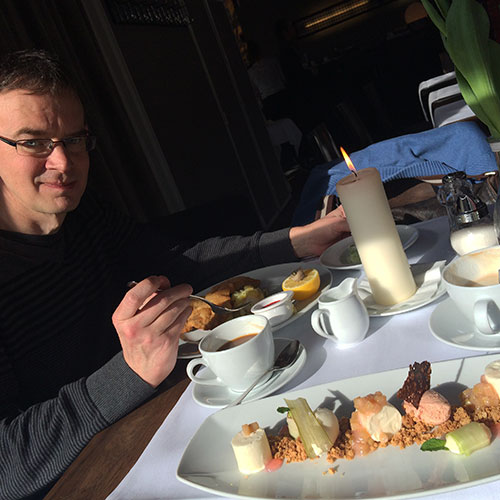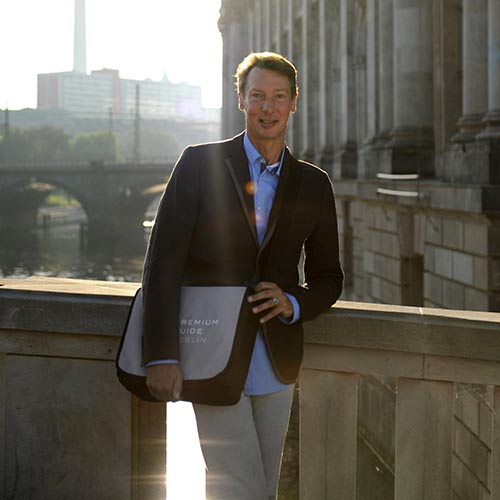Die Restaurants in Mitte
 On the photo, you see Gendarmenmarkt, one of the most beautiful squares in Northern Europe and only one of the must-sees in Mitte, Berlin’s central district. On a night out, you won’t miss out on the trendy quarter called “Spandauer Vorstadt", famous for the Hackesche Höfe-courtyards and Oranienburger Straße, with the New Synagogue. There are loads of nice restaurants in the area, some of them hidden in little side streets. Instead of an old city centre, Berlin has Nikolaiviertel, a project from 1987 consisting of a few blocks of buildings in a mock-medieval style around St. Nicholas church. ‘Unter den Linden’ –the capital’s main avenue– is, of course, obligatory for tourists:Lined with splendid monuments it runs from the Brandenburg gate to the cathedral on the Museums Island.
On the photo, you see Gendarmenmarkt, one of the most beautiful squares in Northern Europe and only one of the must-sees in Mitte, Berlin’s central district. On a night out, you won’t miss out on the trendy quarter called “Spandauer Vorstadt", famous for the Hackesche Höfe-courtyards and Oranienburger Straße, with the New Synagogue. There are loads of nice restaurants in the area, some of them hidden in little side streets. Instead of an old city centre, Berlin has Nikolaiviertel, a project from 1987 consisting of a few blocks of buildings in a mock-medieval style around St. Nicholas church. ‘Unter den Linden’ –the capital’s main avenue– is, of course, obligatory for tourists:Lined with splendid monuments it runs from the Brandenburg gate to the cathedral on the Museums Island. The advantages of diversity in the Mitte :
• Museums • historic city centre • Grand Hotels • Architecture • Wall • From the Brandenburg Gate to Alexanderplatz • Gendarmenmarkt square
Poststraße 28, 10178 Berlin
+49 (0)30 241 56 97
www.gerichtslaube.de
Mutter Hoppe (Nikolai)
Rathausstraße 21, 10178 Berlin
+49 (0)30 247 206 03
www.mutterhoppe.de
Ständige Vertretung (Friedrichstraße)
Schiffbauerdamm 8, 10117 Berlin
+49 (0)30 282 39 65
www.staev.de
Brasserie Am Gendarmenmarkt
Taubenstraße 30, 10117 Berlin
+49 (0)30 204 535 01
brasserieamgendarmenmarkt.de
Unter den Linden 77, 10117 Berlin
+49 (0)30 259 379 30
www.tim-raue.com
Austernbank (Gendarmenmarkt)
Behrenstraße 42, 10117 Berlin
+49 (0)30 767 752 724
www.austernbank-berlin.de
Behrenstraße 72, 10117 Berlin
+49 (0)30 206 286 10
www.india-club-berlin.com
The Sushi Club (Gendarmenmarkt)
Mohrenstraße 42, 10117 Berlin
+49 (0)30 239 160 36
thesushiclub.de
Friedrichstraße 167-168, 10117 Berlin
+49 (0)30 206 728 28
www.boccadibacco.de
Ngon (Nikolai)
Rathausstraße 23, 10178 Berlin
+49 (0)174 192 33 59
www.ngonberlin.de
An obligatory visit and the very practical way to obtain confirmation for a visit to the Reichstag and its dome. Book by e-mail with your full name and date of birth.
Platz der Republik, 11011 Berlin
+49 (0)30 226 2990
www.feinkost-kaefer.de
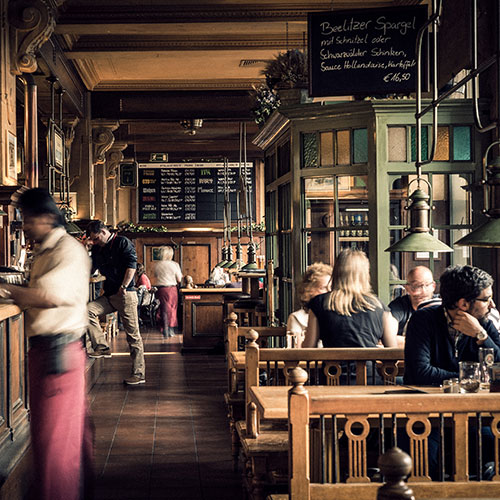
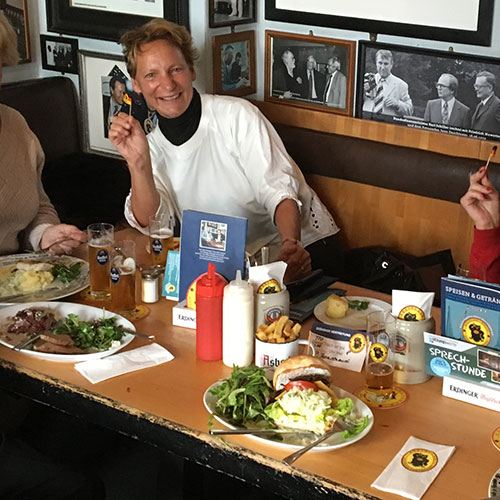
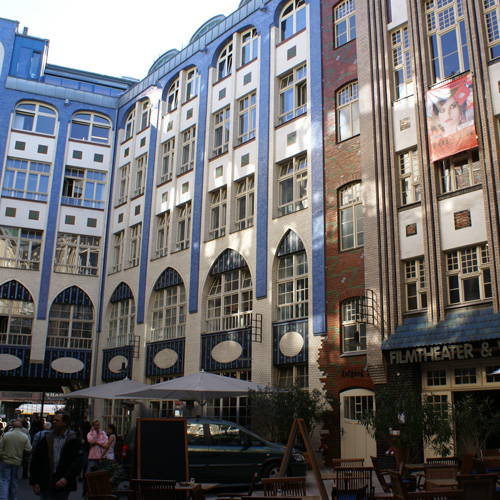 He has many names: Barn quarter or Jewish quarter. In today's trendiest part of Berlin, poverty prevailed until 1900 in this former suburb of Berlin, in the twenties it was already Kutlurzentrum then followed the war and the years of neglect under the GDR. After the fall of communism, investors came and turned Scheunenviertel back into Berlin's cultural centre. Today a visit to these courses is indispensable if you want to discover the most unusual aspects of Berlin (e.g. with the Schwarzenberg Centre or Clärchen Ballhaus).
He has many names: Barn quarter or Jewish quarter. In today's trendiest part of Berlin, poverty prevailed until 1900 in this former suburb of Berlin, in the twenties it was already Kutlurzentrum then followed the war and the years of neglect under the GDR. After the fall of communism, investors came and turned Scheunenviertel back into Berlin's cultural centre. Today a visit to these courses is indispensable if you want to discover the most unusual aspects of Berlin (e.g. with the Schwarzenberg Centre or Clärchen Ballhaus). 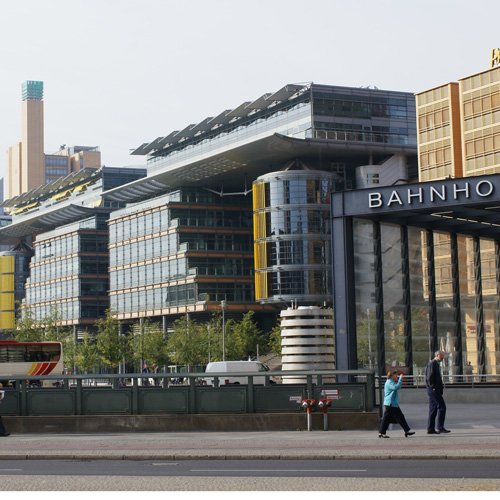 Der Potsdamer Platz had three periods; until 1939 it was the heart of Berlin with its railway stations, its dense traffic and its economic life. Then it became a no-man's-land between the two walls (Main and Backland Wall) and finally Potsdamer Platz regained central importance in Berlin's economic life on the occasion of German reunification. The Berliners regret the old buildings from the time before the war and do not like this hyper-modern square so much. For tourists it is the opposite and many of them appreciate the architecture (Piano, Roger, Jahn & Co.), the gastronomic offers as well as the variety of cultural offers.
Der Potsdamer Platz had three periods; until 1939 it was the heart of Berlin with its railway stations, its dense traffic and its economic life. Then it became a no-man's-land between the two walls (Main and Backland Wall) and finally Potsdamer Platz regained central importance in Berlin's economic life on the occasion of German reunification. The Berliners regret the old buildings from the time before the war and do not like this hyper-modern square so much. For tourists it is the opposite and many of them appreciate the architecture (Piano, Roger, Jahn & Co.), the gastronomic offers as well as the variety of cultural offers. Charlottenburg : When visiting Charlottenburg palace, the only grand residence of the Hohenzollern kings in former West Berlin, you should take your time, especially in summer as the beautiful gardens are inviting to stroll around a bit. Important venues as the fairground & congress centre and the Olympic Stadium are located nearby. Before plunging into the shopping area around Memorial Church (near zoo station), you could probably do with a nice meal. You should venture into the side streets to discover charming little restaurants as around Savignyplatz square (S-Bahn). Charlottenburg’s legendary Ku’damm – capitalist stronghold in the Cold War era – never really ceased to be the city’s most popular shopping boulevard.
Charlottenburg : When visiting Charlottenburg palace, the only grand residence of the Hohenzollern kings in former West Berlin, you should take your time, especially in summer as the beautiful gardens are inviting to stroll around a bit. Important venues as the fairground & congress centre and the Olympic Stadium are located nearby. Before plunging into the shopping area around Memorial Church (near zoo station), you could probably do with a nice meal. You should venture into the side streets to discover charming little restaurants as around Savignyplatz square (S-Bahn). Charlottenburg’s legendary Ku’damm – capitalist stronghold in the Cold War era – never really ceased to be the city’s most popular shopping boulevard.  We absolutely recommend paying a visit to this quarter, which became a symbol of Berlin’s rebirth in the 90s when young people settled in the derelict tenements. A true cosmopolitan spirit reigns in the restaurants in front of the water tower and around Kollwitzplatz, a square that is crammed with young parents twice a week during the organic food market, since gentrification took hold of the neighbourhood. Hungry for culture and adventure, a mixed crowd sets out to discover the buzzing street life, strolling along Kastanienallee and Oderberger Straße, hanging around the funky shops and pavement cafés. There are quaint places to be discovered, like Kulturbrauerei that unites cinemas, bars, theatres and a concert hall in a splendidly restored nineteenth.
We absolutely recommend paying a visit to this quarter, which became a symbol of Berlin’s rebirth in the 90s when young people settled in the derelict tenements. A true cosmopolitan spirit reigns in the restaurants in front of the water tower and around Kollwitzplatz, a square that is crammed with young parents twice a week during the organic food market, since gentrification took hold of the neighbourhood. Hungry for culture and adventure, a mixed crowd sets out to discover the buzzing street life, strolling along Kastanienallee and Oderberger Straße, hanging around the funky shops and pavement cafés. There are quaint places to be discovered, like Kulturbrauerei that unites cinemas, bars, theatres and a concert hall in a splendidly restored nineteenth.